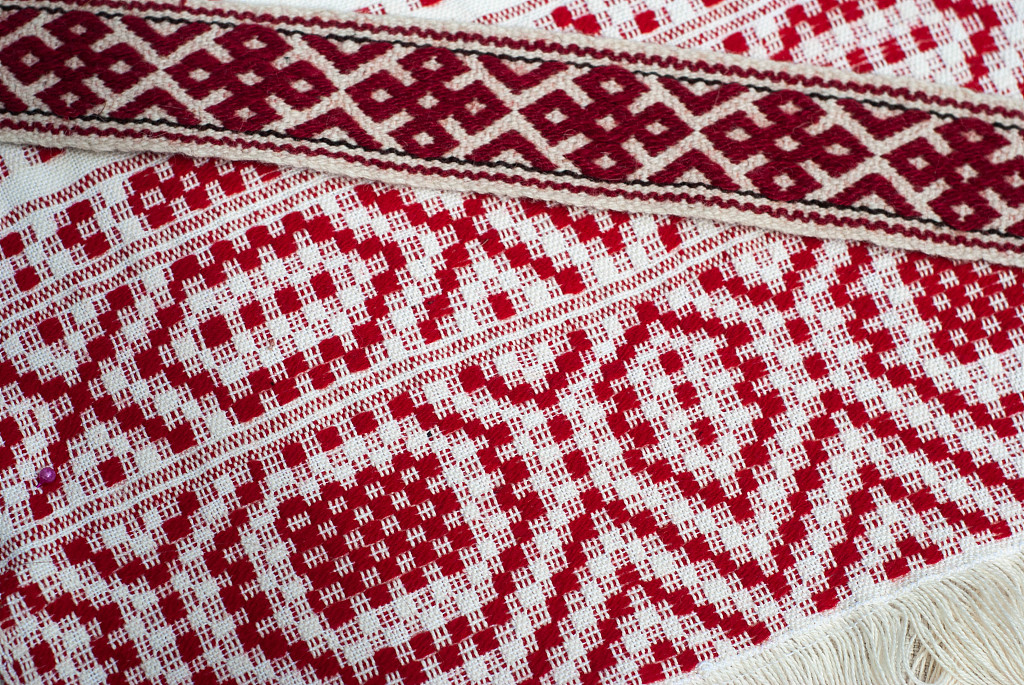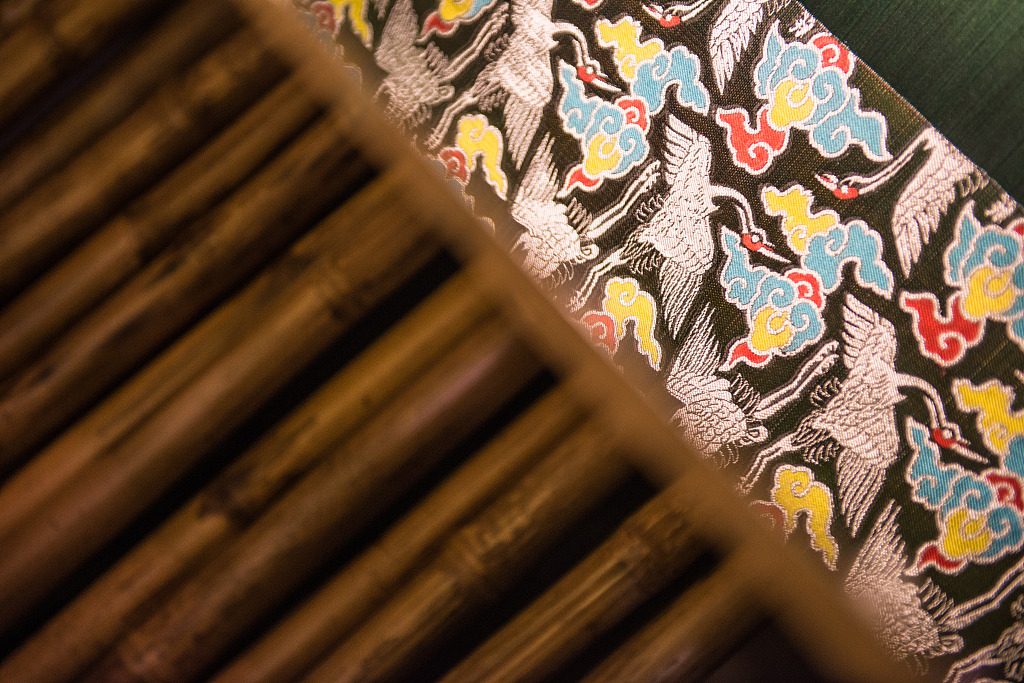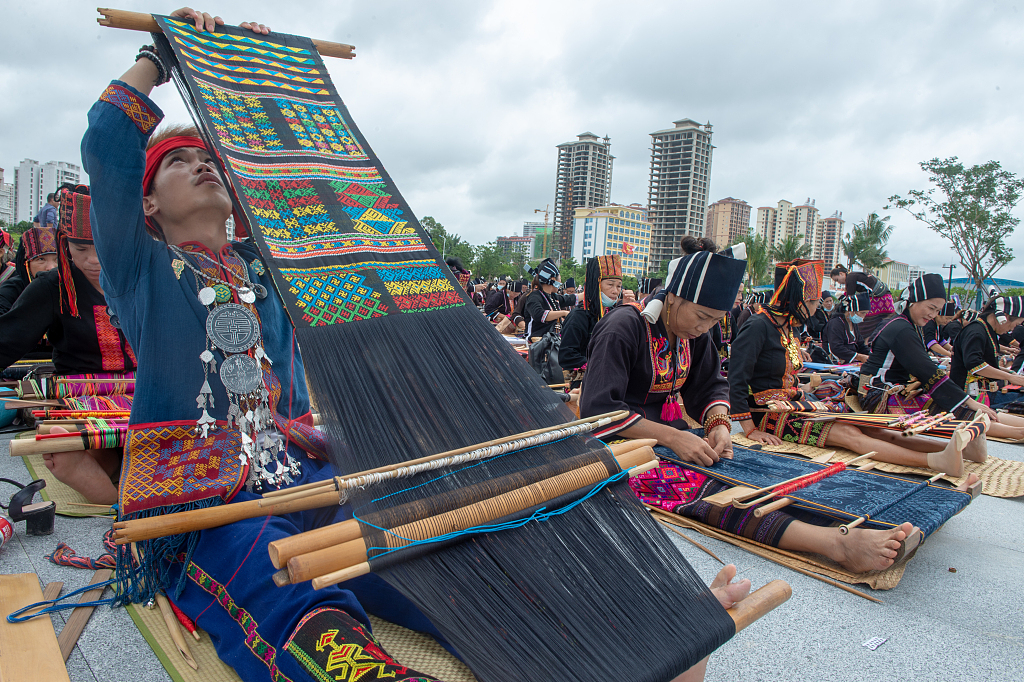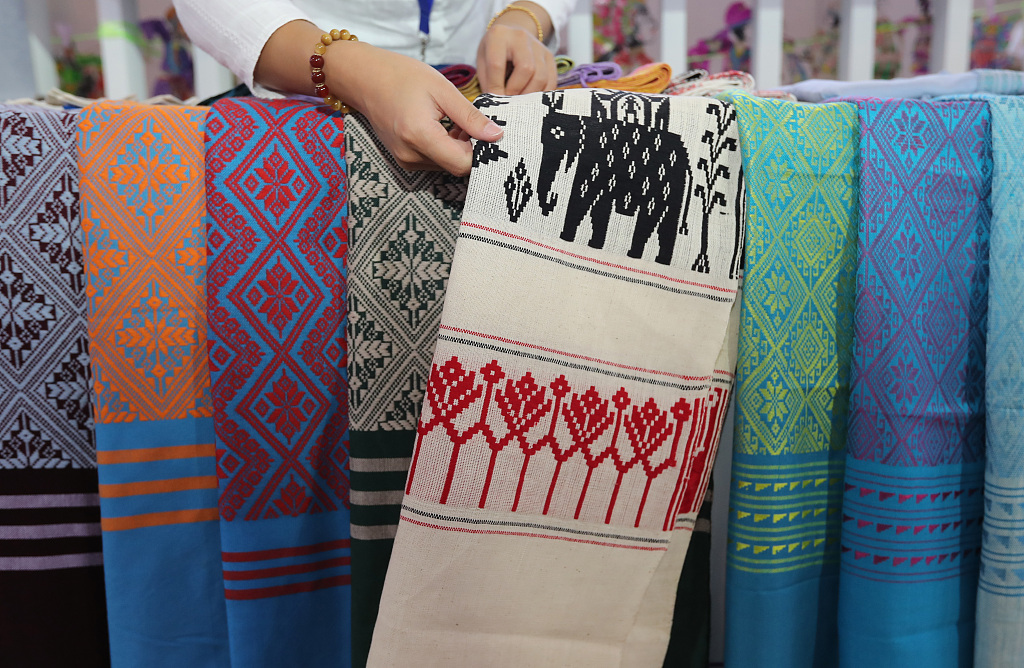Once an accessory reserved for the nobility and wealthy elite, the Slutsk belt has become a representative symbol of Belarusian culture and is now experiencing a revival as the eastern European country renews its tradition of making these luxurious woven sashes.
Weaving is a cultural practice that Belarus shares with China, and there are striking similarities in the patterns developed by both countries. Expensive belts were originally taken to Belarus from Asian countries to serve the tastes of its aristocrats before the domestic Slutsk belt tradition took shape, which evolved to feature its own patterns, motifs and weaving methods.

With a history dating back over 200 years, the belts formed part of the attire of noblemen and were an expression of family traditions. The belt takes its name from Slutsk, a city in Belarus’s Minsk Oblast, which became the home of its belt-making manufactory thanks to a population of skilled weavers there.
The belt is made from silk threads, some covered with fine silver and gold wire. Divided into three parts, the central part of the belt, or medium, featured stripes; and the endings, or heads, featured floral patterns. Once woven, it was run through a roller to give it a smooth texture and shine. Around 1,000 of the original Slutsk belts are understood to have survived, most of which are now housed in museum collections outside Belarus.
Thanks to the Slutsk Belts Program, which was adopted by Belarusian President Aleksandr Lukashenko from 2012 to 2015, the Slutsk Belts enterprise in the eponymous city was supported by efforts to study the original techniques of those 18th century weavers. It subsequently began to produce replicas and souvenirs in the style of these classical belts.
Meanwhile, across the globe, various cities and regions in China are also practicing and preserving the country’s long-inherited brocade-weaving crafts. From Sichuan to Hainan and Yunnan, weavers in China craft brocade items by following the traditions of their respective ethnic groups, showing a similar respect and love for woven crafts as in Belarus.

Sichuan Shu brocade in China. /CFP
Sichuan Shu brocade in China. /CFP
With a history of over 2,000 years, Shu brocades from Sichuan mainly come in red, brown and black. They are made from naturally-dyed silk threads and involve more than 120 steps.

Artisans weave Li brocades by hand in Dongfang, Hainan. /CFP
Artisans weave Li brocades by hand in Dongfang, Hainan. /CFP
With its origins in China’s southern island province of Hainan, the Li brocade derives from the Li people, mainly women, who have passed on the tradition for generations. Using spinning, dyeing, weaving and embroidering techniques, the brocade makers turn cotton and linen into skirts, accessories and other handmade clothing. The brocade patterns and designs symbolize and communicate the beliefs and traditions of the Li people.

A display of Dai brocade in Kunming, Yunnan. /CFP
A display of Dai brocade in Kunming, Yunnan. /CFP
Made with traditional looms, Dai brocades reflect the history of the Dai people, many of whom live in the southern province of Yunnan. Crafted from silk, wool, cotton and linen, they feature images such as flowers, elephants, and cultural figures that are carefully woven into the brocade. Gold, green, red, silver and yellow patterns are often brightly contrasted on black cloth.